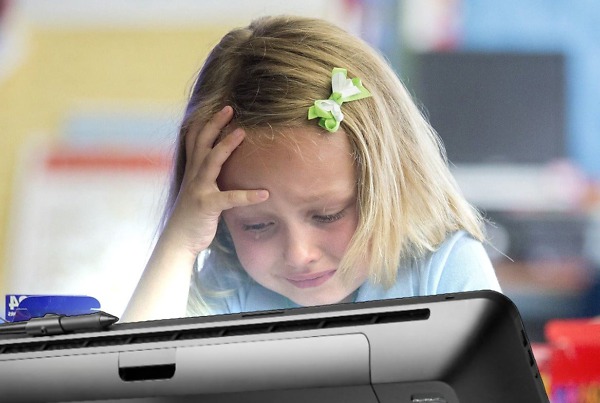
Romance comics were a popular genre of comic books in the United States from the late 1940s to the mid-1970s. These comics, which typically depicted romantic relationships between young adults, reflected the time’s cultural values and social norms.
In the early genre, romance comics were relatively tame and focused on idealized depictions of courtship and marriage. Many stories were set in suburban or small-town America and featured characters who adhered to traditional gender roles. Women were typically portrayed as passive and dependent on men, while men were portrayed as strong, protective, and financially successful.
One of the early years’ most successful romance comic series was Young Romance, created by Joe Simon and Jack Kirby and first published by Crestwood Publications in 1947. Young Romance was aimed primarily at female readers and quickly became a best-seller, spawning numerous imitators.
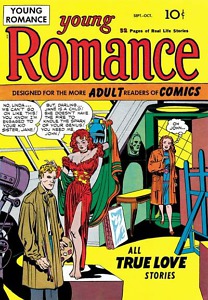
As the 1950s wore on, romance comics became increasingly formulaic and predictable. While the stories were still relatively innocent and chaste, there was a growing emphasis on the physical attractiveness of the characters and their romantic relationships. Many stories centered on love triangles or forbidden romances, with characters facing obstacles such as disapproving parents or social class differences.
While many romance comics of the 1960s focused on traditional themes of courtship and romance, some tackled more complex social issues of the time. One such series was My Love, which was published by Marvel Comics. My Love featured stories that explored topics such as civil rights, drug addiction, and other social problems of the day. One point, for example, depicted the challenges faced by a biracial couple, while another dealt with the struggles of a young woman battling drug addiction. Overall, while more traditional stories dominated the romance comics genre of the 1960s, some comics pushed the boundaries of the genre and tackled social issues in a thoughtful and nuanced way.
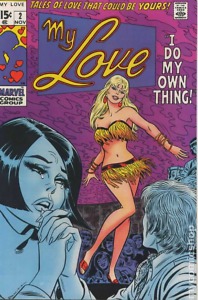
During the 1970s, the demand for romance comics in the United States started diminishing. Factors such as the growing popularity of television and other entertainment options, along with shifting cultural views, contributed to their decline in sales. Publishers began incorporating more explicit content into their romance comics to rejuvenate the genre. However, this strategy didn’t yield the desired results, and most romance comics were eventually discontinued. It’s worth noting that historically, American comic books have primarily targeted young boys and men, often showcasing male superheroes and storylines tailored to male audiences. As a result, the comic book industry has frequently been seen as male-centric.
The comic book industry has also been criticized for how it portrays female characters, often emphasizing their physical appearance and sexuality over their personalities and abilities. This has made it difficult for some women to relate to the stories and characters depicted in comics.
Meanwhile, in Japan where romance comics, or “shojo manga,” which had been evolving since the 1950s, began to evolve in response to changing social attitudes and the rise of feminist movements in Japan. The genre became more diverse and sophisticated, featuring stories that explored complex themes such as gender roles, sexuality, and the challenges of growing up.
One of the most popular shojo manga series of the 1970s was Rose of Versailles, created by Riyoko Ikeda. Set during the French Revolution, Rose of Versailles featured a female protagonist who cross-dressed as a male to serve in the royal court and struggled with her feelings for both men and women. It is important to note that even suggesting a same-sex relationship in a US comic was prohibited via the Comics Code Authority and would not be approved for production. Meanwhile, it was a facet of one of Japan’s most popular comics.
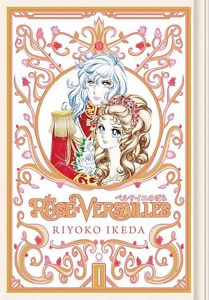
In the 1980s and 1990s, shojo manga continued to evolve, with creators experimenting with new styles and genres. Many shojo manga series of the time featured strong, independent female protagonists who pursued their own dreams and ambitions rather than being defined solely by their relationships with men.
One of the most successful shojo manga series of the 1990s was Sailor Moon, created by Naoko Takeuchi. Sailor Moon featured a team of female superheroes who fought to protect the world from evil and whose romantic relationships with male characters were portrayed as secondary to their mission.
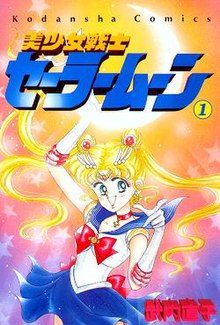
Today, shojo manga remains a popular genre in Japan and around the world. While the themes and styles of the shojo manga have continued to evolve, they remain an essential part of Japanese cultural history and a reflection of the changing attitudes and values of the society in which they are produced.
In recent years, webtoon romance comics have become increasingly popular in the United States and have overtaken traditional print comics regarding both readership and revenue. Webtoons, which are digital comics read online or via mobile apps, offer a new and accessible platform for creators to share their work and connect with fans worldwide.
One of the key reasons for the popularity of webtoon romance comics is their ability to offer a more diverse and inclusive range of stories and characters. Unlike traditional print comics, in which white male creators and characters often dominate, webtoons are produced by a more diverse group of creators and feature a more comprehensive range of perspectives and experiences.
Webtoon romance comics can also experiment with different storytelling formats and techniques, such as vertical scrolling and animated elements, which can make the reading experience more engaging and immersive for readers.
The success of webtoon romance comics has not gone unnoticed by traditional publishers, many of whom have begun to adapt their business models to include digital comics. Companies such as Marvel and DC Comics have launched their digital comics platforms, while others have partnered with webtoon platforms such as LINE Webtoon and Tapas.
Overall, the rise of webtoon romance comics represents a significant shift in the comic book industry, as digital platforms offer new opportunities for creators to reach wider audiences and tell more diverse stories. As webtoons continue to grow in popularity, they will likely play an increasingly important role in shaping the future of the comic book industry.






